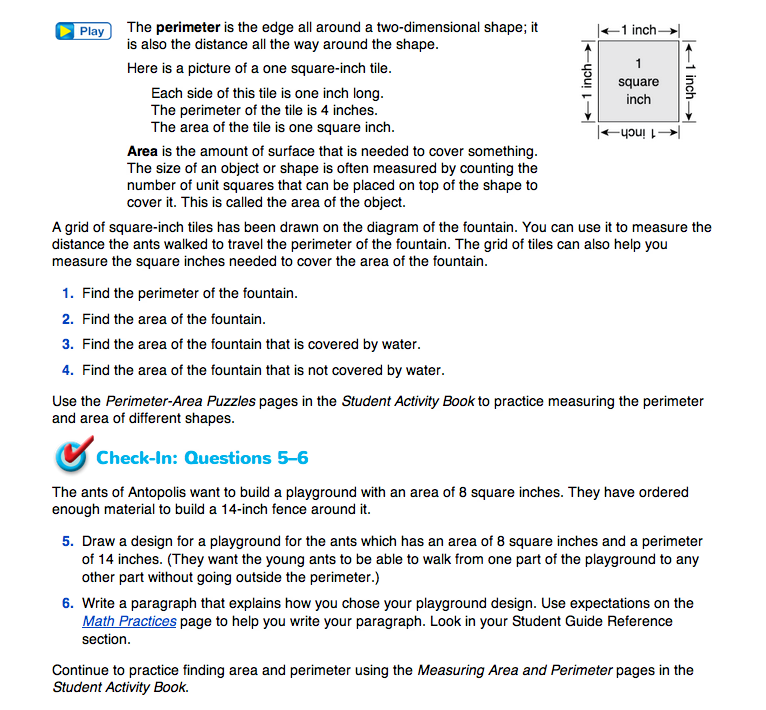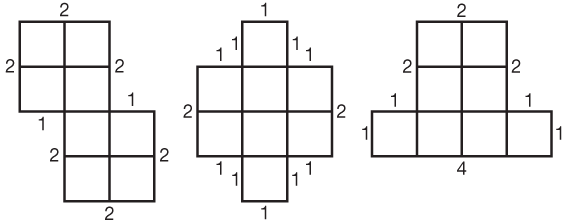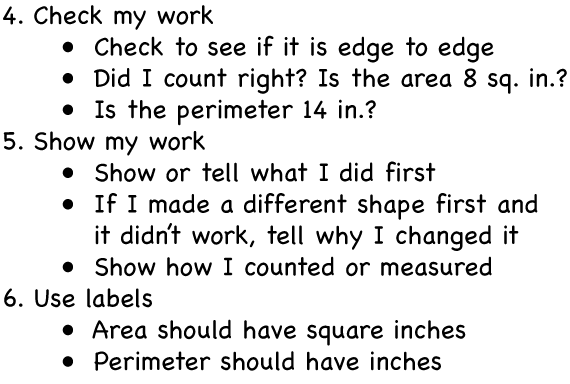Investigating Perimeter and Area
Est. Class Sessions: 2Developing the Lesson
Part 3: Design a Playground Problem
Check-in: Questions 5–6 in the Student Guide introduce an Antopolis playground design problem. To initiate a student discussion of the design constraints, ask student pairs to read Question 5 to each other and take turns stating the problem to each other in their own words. Tell students that you want to be sure they know the problem and that this strategy is often used to determine what is important in a problem.
After student pairs have had the opportunity to discuss the problem, ask:
You may want to record this information on a class display so students can refer to it as they complete their work.
Ask:
To clarify this, use square-inch tiles to display the shapes in Figure 3. The playground shape has to connect edge to edge.
Provide each student with a sheet of Square-Inch Grid Paper and square-inch tiles to test their shapes while solving this problem. Figure 4 shows three samples of solutions to this problem.
In Check-in: Question 6, students are asked to write a paragraph explaining how they determined their playground design. Prepare students to write this paragraph by brainstorming ways to show Math Practices Expectations 4, 5, and 6 in this problem.
- Check my calculations. If I make mistakes, I correct them.
- Show my work. I show or tell how I arrived at my answer so someone else can understand my thinking.
- Use labels. I use labels to show what numbers mean.
Display the Math Practices page in the Student Guide Reference section and ask pairs to read Expectations 4, 5, and 6 and to make a list of ideas to include in their paragraph. See Figure 5.
After student pairs have created a list of ideas, summarize those ideas on a class list. Display this summary list and remind students to use these ideas to write a paragraph for Check-In: Question 6.

















